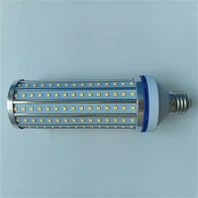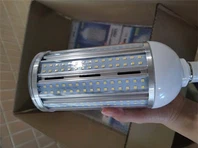Rechargeable nickel-cadmium and nickel-hydrogen batteries and application introduction
1 Brief introduction of rechargeable nickel-cadmium (Cd-Ni) and Ni-MH rechargeable battery
1.1 Rechargeable battery and primary cell
(1) Rechargeable battery refers to a battery that can be repeatedly charged and discharged, also known as a secondary battery or accumulator.
Commonly used rechargeable batteries are: nickel-cadmium batteries, nickel-metal hydride batteries, lead-acid batteries, lithium-ion batteries, zinc-nickel batteries, iron-nickel batteries and other series of batteries.
(2) Primary batteries are dry batteries, also known as primary batteries. Commonly used batteries are: zinc-manganese batteries, zinc-silver batteries, alkaline zinc-manganese batteries, primary zinc-nickel batteries and other series of batteries.
1.2 Rechargeable nickel-cadmium and nickel-metal hydride batteries: (metal hydride-nickel battery Ni-MH battery)
The composition of the battery: the battery is composed of electrodes (Electrode), electrolyte (Electrolyte), diaphragm (Saparator), and outer shell (Outer shell).
Namely: the cathode (Cathode) uses nickel hydroxide and cobalt, the anode (Anode) uses hydrogen storage alloy powder, the electrolyte uses potassium hydroxide, the diaphragm uses nylon cloth, and the outer shell is made of nickel-plated steel shell. The negative electrode of cadmium nickel battery is cadmium oxide, electrolytic sponge cadmium, and the rest is the same as nickel hydrogen battery.
1.3 Classification of rechargeable nickel-cadmium and nickel-metal hydride batteries
(1) Rechargeable nickel-metal hydride batteries are classified according to their plates: sintered nickel-cadmium batteries, nickel-metal hydride batteries, foamed nickel-cadmium batteries, and nickel-metal hydride batteries.
Sintered nickel-cadmium and nickel-metal hydride batteries: The plates are manufactured by sintering, and the production process is complex, with high-rate, ultra-high-rate discharge performance, good high and low temperature performance, but high cost. Widely used in aerospace, military, etc.
Foamed nickel-cadmium and nickel-metal hydride batteries: They are manufactured by using foamed nickel with high porosity as the matrix and filled with active materials. The production process is simple, the battery capacity is high, and the cost is low. It is widely used in electric tools, fire emergency lighting, household appliances and many other civilian fields.
(2) The shape classification of the battery: cylindrical, square, button type, etc.;
(3) Classified according to the discharge rate of the battery: medium rate type, high rate type, super high rate type, etc.
1.4 Main technical performance of cadmium-nickel and nickel-metal hydride batteries
1.4.1 Capacity of Ni-Cd and Ni-MH batteries (Capacity)
Rated capacity refers to the minimum capacity that the battery should release under certain conditions as stated by the manufacturer's trademark.
According to the definition: capacity=time×current………………………………①
Namely: charge capacity=charging time×charging current…………②
Discharge capacity=discharge time×discharge current……③
In the above formulas ①, ②, and ③, the capacity is represented by C, and the unit is ampere-hour (Ah) or milliampere-hour (mAh); the charging and discharging time is represented by h, and the unit is hour; the charging and discharging current is represented by amperes (A) or milliseconds Ampere (mA) said.
The rated capacity of nickel-cadmium and nickel-metal hydride batteries refers to the capacity discharged at a rate of 5 hours, expressed in C5.
For example: Evaluation of the rated capacity of nickel-cadmium and nickel-metal hydride batteries: charge at a constant current of 0.1 C5A for 14 to 16 hours (charging capacity is generally calculated as 120% of the rated capacity), put it aside for 15 to 30 minutes, and then use a constant current of 0.2C5A Discharge to the final voltage 1.0V/capacity.
Example: AA1500mAh Ni-MH battery, charged with 0.5C5A,
Charging current=0.5×1500=750mA
Charging capacity=1500mAh×120% (that is, 1.2 times)=1800mAh
Charging capacity (mAh) 1800mAh
Charging time (h) == = 2.4h or 144min
Discharge capacity (mAh) 750mA
Multiplying rate: refers to the size of charging and discharging current, expressed in multiples of rated capacity.
For example: 0.1C5A, 0.2C5A, 0.5C5A, 1C5A...
The current new IEC and GB/T 15100 standards are changed to ItA, which means that ItA is equivalent to C5A.
An AA1500mAh Ni-MH battery is charged at a constant current of 0.5C5A, and the charging current is 750mAh. 0.5C5A is commonly known as 0.5 magnification.
1.4.2 Voltage of Ni-Cd and Ni-MH batteries
The normal voltage of nickel-cadmium and nickel-metal hydride batteries is 1.2V each.
Assembled battery voltage = 1.2V × number of assembled batteries
The combination of cadmium-nickel and nickel-metal hydride batteries is generally combined in series, and parallel combination is not recommended, because there are certain differences in single batteries. For example, the difference in capacity and capacity leads to the difference in battery temperature, and the difference in battery temperature leads to the difference in voltage. , The voltage difference causes the current of the battery with a high discharge voltage to flow backwards to the battery with a low discharge voltage, causing inconsistent parallel batteries, resulting in unsafe use of the battery pack.
The battery voltage includes charging voltage, open circuit voltage, closed circuit voltage, discharge voltage, working voltage, platform voltage, standard voltage, and termination voltage.
Nominal voltage: nickel-hydrogen battery 1.2V/pc, cadmium nickel battery 1.2V/pc, zinc-manganese battery 1.5V/pc
Lead-acid battery 2.0 V/pc Li-ion battery 3.6 V/pc
Charge voltage: The maximum value of the battery charging voltage during the battery charging process. The battery voltage changes with the charging current. The higher the charging current, the higher the charging voltage, and vice versa.
Cut off voltage: The voltage at which the battery discharges to the discharge cut-off time, which varies with the discharge current.
like:
Discharge rate
End of discharge voltage
0.2 C5A discharge
1.0 V/only
1 C5A discharge
0.9 V/only
5 C5A discharge
0.8 V/only
10 C5A discharge
0.7 V/pc
1.4.3 Self discharge (self discharge)
Cadmium-nickel and nickel-metal hydride batteries release their own capacity in rechargeable batteries without external current discharge.
Self-discharge assessment test: The battery is charged at a constant current of 0.1C5A for 14 to 16 hours, and after being left open for 28 days and nights, discharged at a constant current of 0.2C5A to a 1.0V termination voltage, and the discharge time is required to be ≥3 hours to qualify.
1.4.4 Cycle life
According to the cycle life test method given in GB/T 15100-94 national standard, the cycle life of Ni-MH battery should be ≥500 times; cycle means (charge and discharge) once, that is, charge once and discharge once. Life ends when the discharge capacity is less than 60% of the rated capacity.
It takes a long time to evaluate the cycle life of batteries in accordance with IEC standards and national standards. For this reason, manufacturers who produce nickel-cadmium and nickel-hydrogen batteries and those using nickel-cadmium and nickel-hydrogen batteries currently use accelerated cycle life testing methods; According to the test method of cadmium-nickel and nickel-metal hydride batteries issued by the China Battery Industry Association in 2000: 1C5A constant current charge for 72 minutes, 15 to 30 minutes on hold, 1C5A constant current discharge 1.0V/piece, it is a cycle, and the cycle life requires 300 times; It is required that when the discharge capacity is less than 60% of the rated capacity, the life will end.
1.4.5 The internal resistance of the battery (mΩ) (internal resistance)
The internal resistance of cadmium-nickel and nickel-metal hydride batteries is mainly caused by the electrochemical polarization, concentration polarization, and ohmic polarization of the battery. This indicator mainly depends on the amount of electrolyte, and the electrolyte, diaphragm, and positive and negative plates. , Accessories and other related, the same model, the same capacity of the battery, the internal resistance value is large, indicating that the battery's electrical performance is poor; on the contrary, the internal resistance value is small, indicating that the battery's electrical performance is good.
Internal resistance test: The battery is charged at a constant current of 0.1C5A for 14 to 16 hours, and then left for 60 minutes to test.
AA1200mAh—AA1800mAh battery ≤30mΩ
AAA500mAh—AAA800mAh battery ≤40mΩ
The performance of the battery also includes: high temperature performance, low temperature performance, overcharge performance, constant voltage charging ability, charging receiving ability, shock and vibration performance, etc. Except for the above performance tests, the battery electrical performance tests are carried out under the conditions of an environment of 20±5°C and a relative humidity of 65±20%.
Note: Unless otherwise specified, all battery electrical performance tests are subject to the tests within one month paid to the customer by the factory.
2 National standards for nickel-cadmium and nickel-hydrogen batteries
2.1 GB/T15100—94
The standard includes the test standards for cylindrical nickel-hydrogen batteries; it is divided into high-rate, medium-rate, low-rate, and ultra-high-rate discharge performance.
2.2 GB/T11013—1996
This standard contains technical standards and test methods for cylindrical nickel-cadmium batteries.
2.3 GB/T15100—2004
The standard includes the test standards for cylindrical nickel-hydrogen batteries; it is divided into high-rate, medium-rate, low-rate, and ultra-high-rate discharge performance. Change the traditional charging and discharging rate expression method from the multiple of the rated capacity to the multiple of the current.
2.4 GB/T15100—2005
The standard includes testing standards for cylindrical nickel-metal hydride batteries, small square batteries, and button batteries, and adds a 1.0C5A constant current fast charge test.
2.5 IEC standard for nickel-cadmium and nickel-hydrogen batteries
IEC61951-2: 2003 This standard contains various reliability and safety test standards for cylindrical nickel-metal hydride batteries and various technical standards for batteries.
IEC61951-1: 2003 This standard contains various reliability and safety test standards for cylindrical, small square, button-type nickel-cadmium batteries and technical standards for various batteries.
3 Application fields of cadmium-nickel and nickel-hydrogen batteries and requirements of related supporting industries
3.1 Nickel-cadmium and nickel-metal hydride batteries can be widely used in power tools, fire emergency lighting (including lawn lights, solar lights), electric toys (aircraft models), razors, cordless phones, electric bicycles, digital cameras, walkie-talkies, instruments and meters , Communications, household appliances, dust collectors, MP3, radios, etc.
3.2 Electric tools (SC type)
The main requirements of the power tool industry for cadmium-nickel and nickel-hydrogen SC-type batteries:
Charge with 1C5A constant current for 72 minutes, put it aside for 15-30 minutes
10C5A-15C5A constant current discharge to end voltage 0.7V/pc
Discharge time ≥ 4 minutes or 3.5 minutes
Continuously cycle 10 times, not less than the required discharge time
Within 2 minutes of discharging time, the battery voltage is not less than 1.0V/pc
Batteries for power tools and single batteries are required to be packaged in kraft paper sleeves.
3.3 Emergency lighting fixture industry (SC, C, D, AA, AAA, 2/3AA, 2/3AAA, etc.) emergency lighting fixtures are in accordance with industry requirements and national standards. When the industry generally uses battery packs, constant voltage and current limiting are used. Charge the cadmium-nickel and nickel-metal hydride battery packs, set the charging voltage to 1.43-1.45V/pc, and the charging time is 24 hours.




